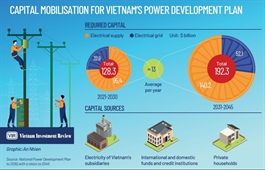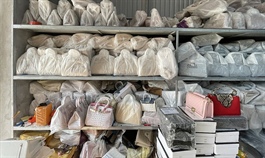Increasing maritime transport cost making export difficult
Increasing maritime transport cost making export difficult
Maritime transport costs have skyrocketed in recent months as the impact of the COVID-19 pandemic takes its toll, pushing import-export companies into a lot of difficulties. 
Maritime transport costs increased by up to ten fold since the third quarter of 2020, together with the shortage of containers for packing.
“We had to consider transporting 20 containers which had already been transported to the port back to the warehouse,” Vu Trang Nhung from Vitaly in the southern province of Binh Duong. Her company exports ceramic tiles to Malaysia, Yemen and Bahrain.
She said that freight rates increased dramatically from the end of 2020. Specifically, fees from Cat Lai Port (HCM City) to Aden Port (Yemen) increased from US$1,500 to $2,500 per 20-feet container in mid-December then jumped to $4,500 in early January 2021.
Adding to this, containers were not always transported immediately but had to wait at the ports, pushing up costs, Nhung said.
Tran Lam Son from the Handicraft and Wood Industry Association of HCM City said that maritime transport costs kept rising. The cost to Hamburg (Germany) rose from $2,000 per container to $8,000.
Nguyen Anh Tu from logistics services company Vinatran said that Viet Nam could not take control over the freight rates due to a lack of competitive fleet and the rates were mainly decided by foreign shipping lines.
Truong Dinh Hoe, General Secretary of the Viet Nam Association of Seafood Exporters and Producers, said that maritime shipping costs from Viet Nam to other countries increased by between two to 10 times from November.
He also pointed out that the shortage of containers also caused delays in shipment which pushing up costs for export companies.
The shortage of containers also caused difficulties for the importation of raw materials for production, disrupting the supply chains and many industries.
Hoe said that a number of seafood orders had to be cancelled due to delays in shipment.
According to Son, the congestion of export goods dramatically affected production, especially storage. Son said that as most companies had limited financial and storage capacity, they were forced to reduce production.
Another problem was that importers were also hesitant to place new orders while the shipping costs remained high.
Deputy Minister of Transport Nguyen Nhat said that due to the impact of the COVID-19 pandemic, containers at a number of ports in Europe and the US could not be freed up in time.
When the demand for freight by sea increased, the rates would increase, this was the way of the market, he said, adding that the increase in maritime transport costs was a global problem and the Government could not force shipping lines to transfer containers to Viet Nam nor produce containers to help in the interim.
Currently, Viet Nam has 1,516 seagoing vessels, 1,049 of which were cargo ships. Just 3.7 per cent of cargo ships were container ships.
As a result, more than 90 per cent of imported and exported goods must rely on foreign shipping lines, Nhat said.
The Government only managed the disclosure of fees of shipping lines and some seaport services charges, he said, adding that the rates were decided by the market.

























